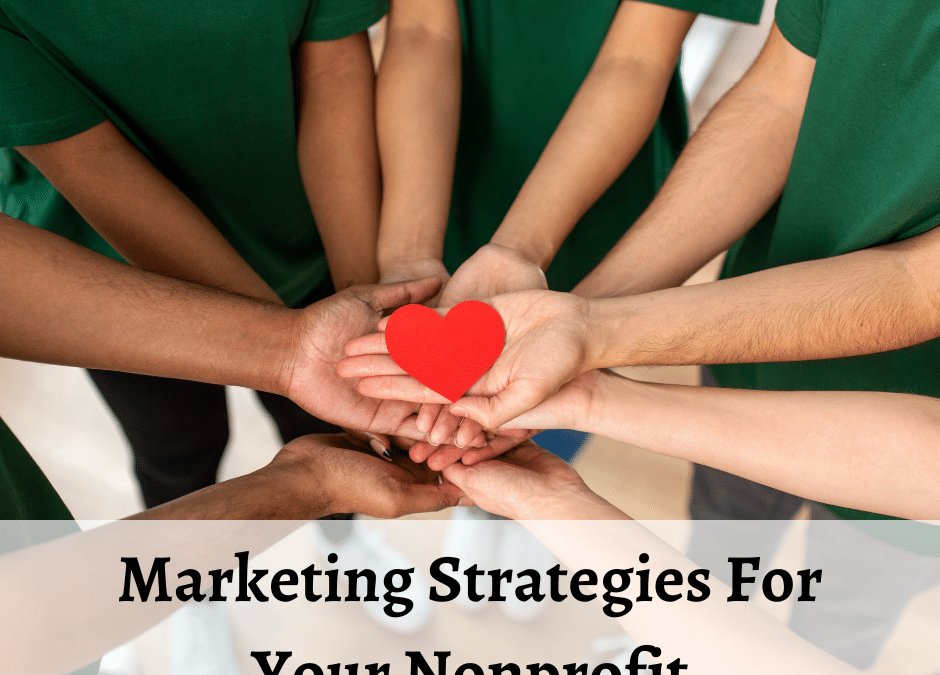If you’re a nonprofit organization, you probably run on a tight budget. Unfortunately, it can be tricky to raise awareness for your cause with limited funds. Thankfully, there are marketing strategies nonprofits can implement to get the most bang for their buck.
This article shares tools to develop a marketing strategy, engage with your audience and find new supporters and donors along the way!
Take Advantage Of Nonprofit Programs And Content Marketing Resources
How would you like to have $10,000 a month to spread the word about your nonprofit’s cause? For qualified organizations, the Google Ad Grants program does just that.
Making the most of your advertising takes some knowledge, but it is worth the effort to learn how to share your story and mission.
If you’re able to secure a Google Grant, remember to use all the money, as it does not accrue. Be sure to make every dollar count by using the best pay-per-click practices, and have your volunteers learn how to use keywords, including short-tail, middle-tail, long-tail and negative keywords to optimize your advertising budget and reach the right audience.
There are certain requirements to qualify for the Google Ad Grants Program, such as holding a 501(c)(3) status, having a website with a domain-owned name and providing detailed and clear information on the nonprofit. Certain organizations, like hospitals, schools and government organizations do not qualify, but there is a separate Google program for education.
Blog To Spread The Word
While nonprofits are not companies in a traditional sense, they still want to drive consumers to their websites and create awareness for their causes and missions. Consistent blogging is a free publicity tool that provides opportunities to share information with potential donors or volunteers and to establish your nonprofit as an authority on the subject. Another benefit of regular blogging is it provides more content for search engines.
With a blog, nonprofits can tell their story without focusing solely on the organization. Think creatively and strategically about ways to share stories from different angles such as:
- Sharing milestones
- Posting about breaking news in your field
- Promoting upcoming or past events
- Sharing behind-the-scene stories and highlighting members of your team
- Featuring stories about supporters who have helped your nonprofit’s cause
- Sharing stats in digestible infographics
A blog’s versatility goes beyond a post on your website; it is a powerful leveraging tool to link on social media, in email campaigns and monthly newsletters and can be shared and re-shared by your followers.
Connect With Your Supporters
Email is one of the most effective marketing strategies because it taps into a captive community. Investing time into an email campaign and a monthly newsletter can go a long way to increase brand visibility, engage with supporters, find new volunteers and raise donations.
After you send out the email, remove any hard bounce emails and review reporting data to find out what recipients are responding to, so you can improve the newsletter and its content.
Email and newsletter design are vital to audience engagement as users size up an email in less than a second.
Here are some of the things you should share in your newsletter:
- Upcoming events
- Blog posts
- Powerful images
- News about volunteers
- Updates about the cause or those affected
- Call-to-action buttons
- A sense of urgency for time-sensitive donation requests
Constituent relationship management systems (CRMs) streamline staying in touch with subscribers. You might have heard of MailChimp and Constant Contact, but there are CRMs that offer pricing and unique features for nonprofits like Salsa CRM, Aplos and NeonCRM.
Be Savvy With Social Media
Social media is a way for nonprofits to connect with their supporters and engage with them daily. Businesses are often tempted to be on all platforms, and with stats like these by Hootsuite, you may think that is the way to go.
However, to be savvy with social media businesses need to be selective. With limited funds and volunteer resources, a nonprofit will first need to cater to their current customer base and their platform of choice. When adding additional social platforms, take the time to understand each platform, who uses it and then review how the organization’s resources can be allocated.
Promote Your Nonprofit On Facebook
2.04 billion people use Facebook each quarter. By establishing a nonprofit page you can share your message all over the world. Nonprofits should also consider creating a dedicated group for their supporters. This allows them to use Meta’s fundraising tools to collect donations. Another benefit is access to donation transaction reports, which is available in the reporting features.If you are wondering if Facebook is the right social platform for your nonprofit, here are stats from Nonprofits Source:
- 18% of donors worldwide have given through Facebook fundraising tools.
- 88% say they are likely to give through Facebook fundraising in the future.
- 84% of Facebook users share to show their support for a cause and highlight issues that are important to them.
- Facebook refers 29.4% of traffic to donation pages on #GivingTuesday.
Like the Google Ad Grants Program, there are criteria nonprofits need to meet, so make sure you do some research before setting up your page.
The Impact Of Visual Content
Whether a nonprofit has been approved for the Google Ads Grant Program or is developing content marketing for social media channels, high-quality visuals are essential to any successful marketing campaign. According to BrainRules, people are able to retain 55% more of the information if visuals are integrated into the content.
What types of visuals should you share? At the core, you’ll want to focus on images that convey your nonprofit’s mission. However, images can also speak to the many aspects of the nonprofit, such as staff and volunteers who work behind the scenes and those who have benefited from the nonprofit’s goals.
But who should you focus on with your social media content? For most nonprofits, the target audience will include younger audiences, as they tend to be more socially involved and proactive.
Instagram is an image-centered social media platform with extreme popularity in this key demographic. In fact, over 60% of its audience is between 18 and 34 years old. This age group is known to be active in giving to causes that mean something to them. Appealing to them on a platform they use could generate new supporters and donors.
If you’re concerned about spending money on an expensive photo editing program, don’t worry. Nonprofits don’t have to spend much money to create eye-catching graphics. Free programs like Canva have hundreds of templates.
Build A Marketing Strategy
With these programs and tools, you are now ready to brainstorm ideas, understand your audience, assess your resources and budget and build a marketing strategy with SMART goals:
- Specific
- Measurable
- Attainable
- Relevant
- Timely
Once your marketing strategy is in place, check in after the first quarter to review the data and see if your plan is meeting the nonprofit’s goals and make changes if necessary.
Ask Three Girls Media How We Can Help
In many cases, nonprofit organizations have volunteers to help with digital marketing tasks, and while their budgets are tight, hiring a digital marketing firm with extensive knowledge of current trends, branding and more could save hours of frustration.
If you are a nonprofit in need of assistance, contact our team at Three Girls Media. We love helping nonprofit organizations navigate content marketing through blogging, social media, email marketing and more!
Special Offer:
Sign up for a complimentary consultation during January and receive an Email Marketing Guide valued at $475! We offer a 30-minute phone consultation with our CEO and can answer your questions and discuss your specific marketing needs – no strings attached. Call 360-955-1410 or contact us today to arrange your consultation!






